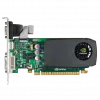
Nvidia (NASDAQ: NVDA) is a leading technology company based in Santa Clara, California, best known for its GeForce GPUs, competing with AMD's Radeon. It also develops AI processors, data center solutions, and automotive AI. Nvidia's acquisitions include 3dfx, Mellanox, and ARM (pending approval). It provides proprietary drivers for Linux, drawing criticism from open-source communities. Nvidia's CUDA platform revolutionized AI, gaming, and scientific computing, cementing its dominance in the GPU market.










